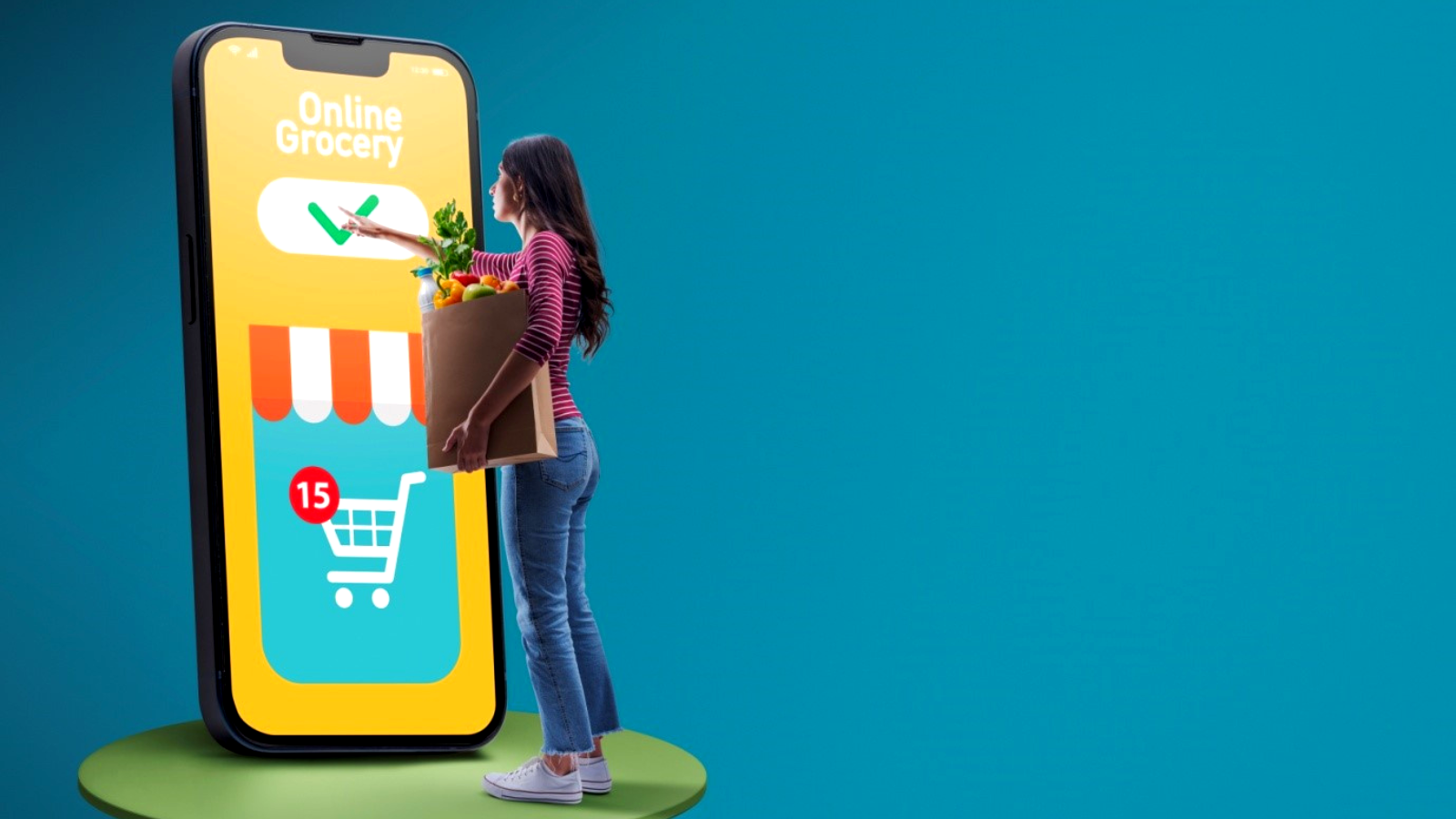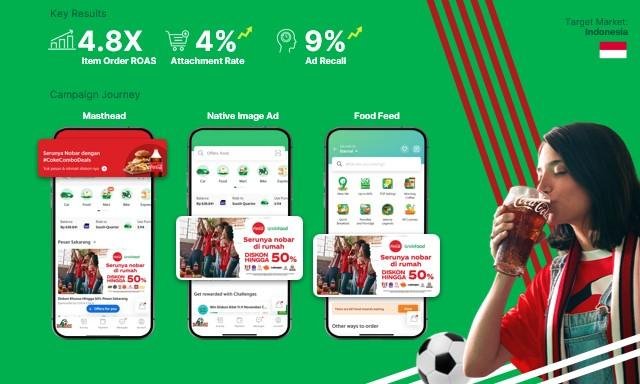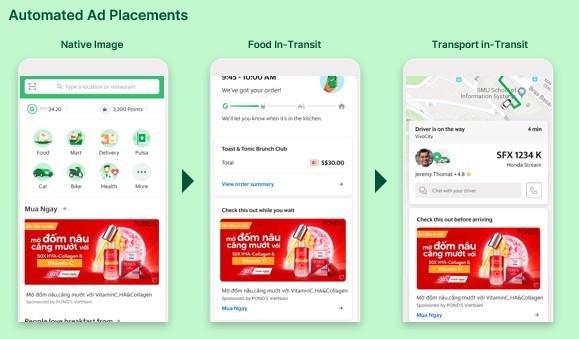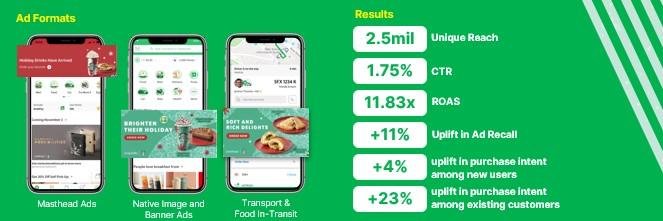
Three brands acing the ad equity game on retail media
share on
Ad equity isn't a concept foreign to marketers. At the heart of it, ad equity is a way to measure the value of an ad platform in the eye of the consumer.
More clearly, research firm Kantar defines ad equity as how receptive consumers are to advertising messages across different media channels, how they perceive ads on these platforms, and how likely they are to respond positively or negatively to ads.
With 2023 being the year of the rise of retail media, ad equity as a term has gained more prominence. In fact, a study by Kantar found that the retail media networks rank high in ad equity across Southeast Asia. However, while multiple players are touting their retail media capabilities, getting your media investment right does require skilful placement and strategy.
We highlight three examples of brands that managed to achieve better impact on their key metrics and higher returns by advertising on the Grab app.
This article was written in collaboration with GrabAds.
- Coca-Cola
Indonesia is a prominent market for Coca-Cola. With a large base of consumers being avid football fans, the brand decided to partner with Grab during the World Cup to increase the association of Coca-Cola with meals for at-home consumption.
Bundling has always been a successful sales strategy for Coca-Cola Indonesia. Customers love adding the signature soda to their meals when ordering food on Grab. So, when football fans were eagerly awaiting the FIFA World Cup 2022, Coca-Cola saw a huge opportunity to capture the excitement of the season and increase the attachment rate.
Running a month-long campaign from November to December 2022, Coca-Cola launched #CokeComboDeals on GrabFood, enticing hungry match viewers who were glued to their screens. It also ran masthead banners and native image ads to capture consumers’ attention as they browsed the app, making sure they quenched their thirst during the match.
Last but not least, the brand leveraged GrabAds’ deep audience insights and targeted those who were most likely to buy—Coca-Cola drinkers in Indonesia aged 18–44 years old.

With the campaign, Coca-Cola saw a 4.8 times increase in item orders and return on advertising spend, and an increase of 4% in attachment rate. There was also a 9% ad recall.
- Pond’s
In 2022, iconic skincare brand Pond’s introduced a new product line called Pond’s Age Miracle in Vietnam, which promises to restore youthful radiance to the skin.
While fighting signs of ageing is a top priority for many consumers, Pond’s found that many consumers weren’t yet aware of its full range of anti-ageing products and the benefits they offer. To raise awareness and communicate the benefits of its serum, Pond’s decided to experiment with a new retail media channel: superapp advertising.
With the 11-11 Singles’ Day shopping festival, Pond’s worked with GrabAds to build awareness of Pond’s Age Miracle and to drive traffic to Pond’s pages on eCommerce sites where users could buy the products.
The campaign promoted the Age Miracle serum to women aged 18 to 50 in six key cities, with a specific focus on those aged 25 and above. The campaign messaging connected with a top concern for age-conscious consumers: fading brown spots.

To measure the campaign’s impact on critical brand metrics, GrabAds commissioned a brand lift study from media measurement company Kantar.
Kantar’s analysis showed a very healthy CTR of 0.8% and uplift in ad recall of +8%, roughly 1.3x higher than the Southeast Asia norm. The report also measured a 3% uplift in association, with customers agreeing that “Pond’s Age Miracle helps to fade brown spots” after being exposed to the campaign. Kantar’s benchmarks showed that GrabAds’ performance as a branding tool was on par with that of more established platforms.
- Starbucks
In the Philippines, Starbucks has a loyal customer base that often orders from the Starbucks menu through the Grab app. During the Christmas season, the challenge was to increase sales and brand metrics without relying on promotions, despite the popularity of seasonal menus.
Familiar with the Grab ecosystem, Starbucks decided to partner with GrabAds from 2 November 2022 to 30 November 2022 to advertise its festive menu to users near its stores during the Christmas season in the Philippines.
The campaign aimed to associate the holiday spirit with Starbucks' seasonal menu, using bright visuals to encourage users to indulge in the treats. Starbucks used solutions such as automatic placements, geo-fencing, masthead ads and native banner ads.

The month-long campaign saw an 11% uplift in ad recall, which is 2x higher than Kantar norms and drove higher loyalty among existing users by driving +23% uplift in purchase intent among existing customers. The campaign also had a 1.75% click-through rate, delivering successful results.
share on
Free newsletter
Get the daily lowdown on Asia's top marketing stories.
We break down the big and messy topics of the day so you're updated on the most important developments in Asia's marketing development – for free.
subscribe now open in new window
